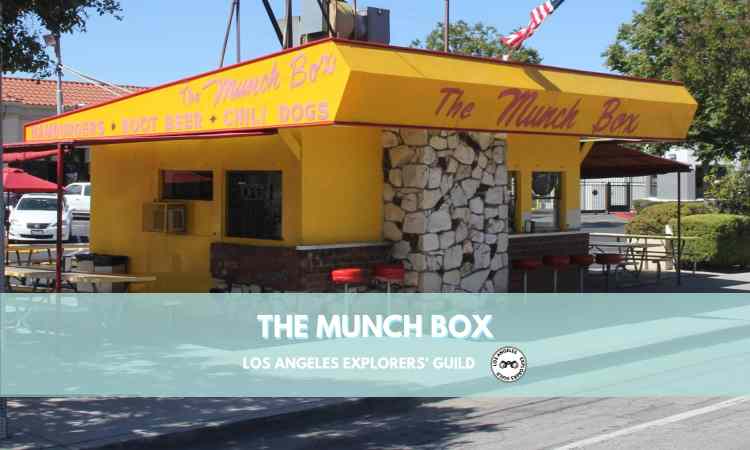In 1983, developer Albert Taira, to comply with the Los Angeles Community Redevelopment Agency’s then-recently established percent-for-art program commissioned a statue of Nionomiya Kinjiro to be placed in front of the Manufacturers Bank branch at the corner of 2nd and San Pedro Streets.
The statue, sculpted by famed Japanese artist Junichiro Hannya, is a six-foot tall bronze image of a somber-faced teenage boy, about 14 years old, clad in sandals and peasant’s clothing and walking with a bundle of sticks on his back while reading a book. He stands atop a four-foot tall pedestal made from tiles of black granite.

There used to be a plaque bolted to the front granite tile with the name of the statue and an explanation of its significance. But that’s been missing for many years. All that remains are four holes where the bolts once held the expository plaque in place.
Like the bronze plaque, the Manufacturers Bank branch is no longer here — it closed in December 2021. And the granite tiles are starting to chip and crack. But through all this change and neglect, Ninomiya continues his vigil.
The Latest Exploration …
Alta Cienega Motel: The Other Morrison Hotel
It’s been called the most disgusting hotel in Los Angeles. It’s also been called a must-see destination for any serious fan of The Doors. No, it’s not Morrison Hotel. It’s Jim Morrison’s final home in West Hollywood.
Keep readingNinomiya Kinjiro is known as “the peasant sage of Japan”. Well, that’s not entirely true. Ninomiya Sontoku is known as the peasant sage. But in his youth, Sontoku was called Kinjiro. And since this is a statue of the sage as a young boy, it seems fitting that the artist chose to refer to it by the sage’s youthful appellation instead of his adult name.
Who Was Ninomiya Sontoku?
Between 1830 and 1843, during Japan’s Tokugawa period, Ninomiya Sontoku and his devotees actively promoted the concept of hotoku, (which loosely translates to “repay the indebtedness” or “repay the virtue”), a religious philosophy combining the ideals of cooperation, mutual assistance, and honoring one’s parents with that of more tangible matters of irrigation, better crop fertilization, and storing excess crops to protect against lean years. He also championed the feudal state of Japan as a way to bolster the economy.
Sontoku became a popular symbol used by the Japanese government in an attempt to maintain a strong rural mindset after the 1905 Russo-Japanese war. Ninomiya’s lessons were repurposed to support Japan’s aggressive military of that age. To help reinforce this shift in thinking, small statues of the sage as a boy, reading while carrying firewood, were placed in schools throughout the country. These small, omnipresent figures served as constant reminder to Japanese schoolchildren of the importance of work and study.

It’s this last point that caused some controversy with the statue when it was first unveiled. Today the image of the young Ninomiya is seen as a propaganda (most of the small schools statues were destroyed by American forces occupying Japan after WWII) and, as such, inappropriate for the Japanese-American community.
It’s also been said that the gatekeepers at the Community Redevelopment Agency, who were expecting a statue of “original design,” were unhappy with an enlarged version of a statue that was once found all throughout Japan.
It doesn’t seem likely that developer Taira was being subversive or avoiding commissioning something original. Rather, the choice of honoring Ninomiya with the peasant sage’s youthful appearance and boyhood nickname seems to focus on Ninomiya’s early achievements of building a community. After all, the bronze plaque that once accompanied the statue praised the issei (first generation Japanese immigrants) that came to America and built the community of Little Tokyo.
Ninimiya Kinjiro
- 200 S San Pedro (at 2nd), Little Tokyo
- 34.049085, -118.241616 [ Google Maps ]
- What3words: ///splash.buck.ruled
Our Most Recent Explorations







